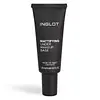What's inside
What's inside
 Key Ingredients
Key Ingredients

 Benefits
Benefits

 Concerns
Concerns

 Ingredients Side-by-side
Ingredients Side-by-side

Cyclopentasiloxane
EmollientIsododecane
EmollientDimethicone
EmollientStearoxymethicone/Dimethicone Copolymer
EmollientIsononyl Isononanoate
EmollientSilica
AbrasivePolysilicone-11
Methyl Methacrylate Crosspolymer
Polymethylsilsesquioxane
Diamond Powder
AbrasiveEnantia Chlorantha Bark Extract
Skin ConditioningCassia Angustifolia Seed Polysaccharide
Skin ConditioningSaccharide Isomerate
HumectantLysophosphatidic Acid
Skin ConditioningBHT
AntioxidantLecithin
EmollientOleanolic Acid
Skin ConditioningMica
Cosmetic ColorantButylene Glycol
HumectantCaprylyl Glycol
EmollientMethicone
EmollientEthylhexylglycerin
Skin ConditioningWater
Skin ConditioningAmodimethicone
Titanium Dioxide
Cosmetic ColorantAlumina
AbrasiveAdipic Acid/Neopentyl Glycol Crosspolymer
Calcium Silicate
AbsorbentVp/Va Copolymer
Dimethiconol
EmollientHydroxyethylcellulose
Emulsion StabilisingLaureth-12
EmulsifyingLysolecithin
EmulsifyingHydroxypropyl Methylcellulose
Emulsion StabilisingChlorphenesin
AntimicrobialPotassium Sorbate
PreservativeSodium Benzoate
MaskingPhenoxyethanol
PreservativeIron Oxides
Cyclopentasiloxane, Isododecane, Dimethicone, Stearoxymethicone/Dimethicone Copolymer, Isononyl Isononanoate, Silica, Polysilicone-11, Methyl Methacrylate Crosspolymer, Polymethylsilsesquioxane, Diamond Powder, Enantia Chlorantha Bark Extract, Cassia Angustifolia Seed Polysaccharide, Saccharide Isomerate, Lysophosphatidic Acid, BHT, Lecithin, Oleanolic Acid, Mica, Butylene Glycol, Caprylyl Glycol, Methicone, Ethylhexylglycerin, Water, Amodimethicone, Titanium Dioxide, Alumina, Adipic Acid/Neopentyl Glycol Crosspolymer, Calcium Silicate, Vp/Va Copolymer, Dimethiconol, Hydroxyethylcellulose, Laureth-12, Lysolecithin, Hydroxypropyl Methylcellulose, Chlorphenesin, Potassium Sorbate, Sodium Benzoate, Phenoxyethanol, Iron Oxides
Polysilicone-11
Dimethicone
EmollientCyclopentasiloxane
EmollientWater
Skin ConditioningButylene Glycol
HumectantNylon-12
Silica
AbrasivePEG-10 Dimethicone
Skin ConditioningEnantia Chlorantha Bark Extract
Skin ConditioningPhenoxyethanol
PreservativeIsohexadecane
EmollientLaureth-12
EmulsifyingCaprylyl Glycol
EmollientPolysorbate 40
EmulsifyingAmmonium Polyacryloyldimethyl Taurate
Emulsion StabilisingHexylene Glycol
EmulsifyingEthylhexylglycerin
Skin ConditioningOleanolic Acid
Skin ConditioningPolysilicone-11, Dimethicone, Cyclopentasiloxane, Water, Butylene Glycol, Nylon-12, Silica, PEG-10 Dimethicone, Enantia Chlorantha Bark Extract, Phenoxyethanol, Isohexadecane, Laureth-12, Caprylyl Glycol, Polysorbate 40, Ammonium Polyacryloyldimethyl Taurate, Hexylene Glycol, Ethylhexylglycerin, Oleanolic Acid
Ingredients Explained
These ingredients are found in both products.
Ingredients higher up in an ingredient list are typically present in a larger amount.
Butylene Glycol (or BG) is used within cosmetic products for a few different reasons:
Overall, Butylene Glycol is a safe and well-rounded ingredient that works well with other ingredients.
Though this ingredient works well with most skin types, some people with sensitive skin may experience a reaction such as allergic rashes, closed comedones, or itchiness.
Learn more about Butylene GlycolCaprylyl Glycol is a humectant and emollient, meaning it attracts and preserves moisture.
It is a common ingredient in many products, especially those designed to hydrate skin. The primary benefits are retaining moisture, skin softening, and promoting a healthy skin barrier.
Though Caprylyl Glycol is an alcohol derived from fatty acids, it is not the kind that can dry out skin.
This ingredient is also used as a preservative to extend the life of products. It has slight antimicrobial properties.
Learn more about Caprylyl GlycolCyclopentasiloxane, or D5, is a silicone used to improve texture of products and trap moisture.
D5 is considered lightweight and volatile. Volatile means it evaporates quickly after application. Once evaporated, D5 leaves a thin barrier that helps keep skin hydrated.
It is also an emollient. Emollients help soften the skin and prevent water loss. Silicones create a silky texture in products. D5 helps other ingredients become more spreadable.
Studies show D5 is safe to use in skincare products. We recommend speaking with a skincare professional if you have concerns.
Learn more about CyclopentasiloxaneDimethicone is a type of synthetic silicone created from natural materials such as quartz.
What it does:
Dimethicone comes in different viscosities:
Depending on the viscosity, dimethicone has different properties.
Ingredients lists don't always show which type is used, so we recommend reaching out to the brand if you have questions about the viscosity.
This ingredient is unlikely to cause irritation because it does not get absorbed into skin. However, people with silicone allergies should be careful about using this ingredient.
Note: Dimethicone may contribute to pilling. This is because it is not oil or water soluble, so pilling may occur when layered with products. When mixed with heavy oils in a formula, the outcome is also quite greasy.
Learn more about DimethiconeWe don't have a description for Enantia Chlorantha Bark Extract yet.
Ethylhexylglycerin (we can't pronounce this either) is commonly used as a preservative and skin softener. It is derived from glyceryl.
You might see Ethylhexylglycerin often paired with other preservatives such as phenoxyethanol. Ethylhexylglycerin has been found to increase the effectiveness of these other preservatives.
We don't have a description for Laureth-12 yet.
Oleanolic acid is a type of triterpene.
Triterpenes are chemical compounds found in various plants such as pomegranates, apples, basil, and rosemary. They have been shown to have anti-inflammatory and antioxidant properties.
Phenoxyethanol is a preservative that has germicide, antimicrobial, and aromatic properties. Studies show that phenoxyethanol can prevent microbial growth. By itself, it has a scent that is similar to that of a rose.
It's often used in formulations along with Caprylyl Glycol to preserve the shelf life of products.
Polysilicone-11 is a film-forming silicone that creates a non-tacky and matte finish on the skin. It's commonly used to improve texture, absorb excess oil, and help active ingredients spread evenly.
Due to its "rubber-like" structure, it stays on the skin's surface instead of being absorbed. On the skin, it creates a flexible layer that enhances wearability and stability.
Silica, also known as silicon dioxide, is a naturally occurring mineral. It is used as a fine, spherical, and porous powder in cosmetics.
Though it has exfoliant properties, the function of silica varies depending on the product.
The unique structure of silica enhances the spreadability and adds smoothness, making it a great texture enhancer.
It is also used as an active carrier, emulsifier, and mattifier due to its ability to absorb excess oil.
In some products, tiny microneedles called spicules are made from silica or hydrolyzed sponge. When you rub them in, they lightly polish away dead skin layers and enhance the penetration of active ingredients.
Learn more about SilicaWater. It's the most common cosmetic ingredient of all. You'll usually see it at the top of ingredient lists, meaning that it makes up the largest part of the product.
So why is it so popular? Water most often acts as a solvent - this means that it helps dissolve other ingredients into the formulation.
You'll also recognize water as that liquid we all need to stay alive. If you see this, drink a glass of water. Stay hydrated!
Learn more about Water